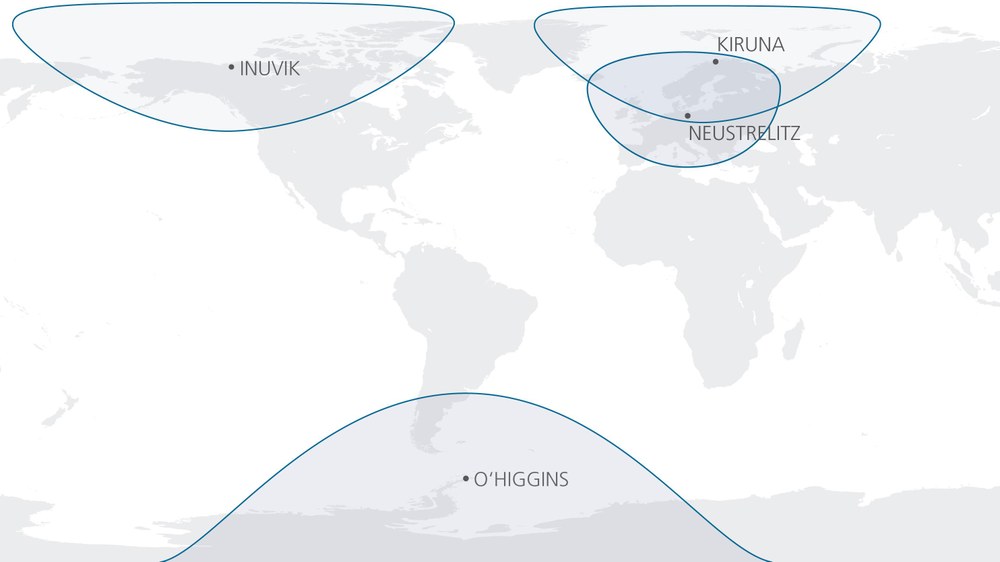The ground segment

The radar data recorded by TerraSAR-X and TanDEM-X is downlinked from orbit to a global network of ground receiving stations. After reception it is forwarded to a data centre in Oberpfaffenhofen, Germany for processing into products such as elevation models. Finally it will be made available to customers worldwide. This complex data transfer and processing operation is handled by the ground segment that has been developed and is being operated by four DLR institutes: the Microwaves and Radar Institute (Institut für Hochfrequenztechnik und Radarsysteme; HR), the Remote Sensing Technology Institute (Institut für Methodik der Fernerkundung; IMF), the German Remote Sensing Data Center (Deutsche Fernerkundungsdatenzentrum; DFD) and the German Space Operations Center (Deutsche Raumfahrt-Kontrollzentrum; GSOC).
The ground segment, which was originally developed by a DLR team for TerraSAR-X, has been extended for the TanDEM-X mission to accommodate the operation of two satellites. It also has extensive new features such as safe formation flying, precise baseline determination, and a high-performance data reception and processing chain. Additional specific features have been added for TanDEM-X operations.
A key issue in operating the missions jointly is the different image acquisition scenarios. While TerraSAR-X requests are typically for single scenes that will be used by individual scientific and commercial customers, the global digital elevation model requires a global mapping strategy. This strategy has to also account for the formation geometry in use at any given time, which, in turn, depends on the helix parameters selected. This is because any given helix permits the acquisition of digital elevation model data only within a certain range of latitudes.
In addition, the two satellites have to be available for individual use during the three-year tandem phase. For this purpose, a reference mission scenario has been developed under which first priority is accorded to digital elevation model images. This scenario leaves enough space for planning TerraSAR-X images around those taken by TanDEM-X.
The two satellites will downlink their data to a network of three ground stations: Kiruna in Sweden, Inuvik in Canada and O'Higgins in the Antarctic. The global acquisitions for digital elevation models alone will consume a data storage volume of more than 350 terabytes, which corresponds to the capacity of around 45,000 DVDs. After a brief quality check, the data will be recorded on tape and forwarded to the DLR Remote Sensing Data Centre for processing and archiving.
